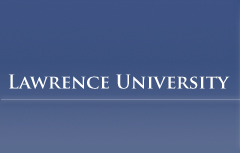Document Type
Honors Project
Publication Date
Spring 6-4-2015
Abstract
Major- and minor-group rhinoviruses enter their host by binding to the ICAM-1 and LDL-R, respectively. These receptors are present on both macrophages and epithelial cells. Although epithelial cells are the primary site of productive HRV infection, previous studies have implicated macrophages in establishing the cytokine dysregulation that occurs during rhinovirus-induced asthma exacerbations. In human primary macrophages, differential signaling pathway activation, gene expression and cytokine production was observed between major- and minor-group rhinovirus upon initial HRV binding, indicating discordant receptor-dependent response to these rhinovirus types. Variances in phosphorylation of kinases (p38, ERK1/2, p65, IKKβ, IkBα) were also observed between the major- and minor- group HRV treatments. Differential activation of signaling pathways led to changes in the production of the asthma-relevant cytokines IL1RN and CCL18. We report that genetically similar viruses elicit dissimilar cytokine release, transcription factor phosphorylation, as well as MAPK and NF-κB activation from macrophages, suggesting that receptor use is a mechanism for establishing the inflammatory microenvironment in the human airway upon exposure to rhinovirus.
Level of Honors
cum laude
Department
Chemistry
Advisor
David J. Hall
Recommended Citation
Smith, Cosonya A., "Rhinoviral-Induced Inflammation: Exploring the Inflammatory Implications of Common Cold induced Asthma Exacerbations" (2015). Lawrence University Honors Projects. 82.
https://lux.lawrence.edu/luhp/82

Comments
Advisor: David J. Hall
Level of Honors: cum laude